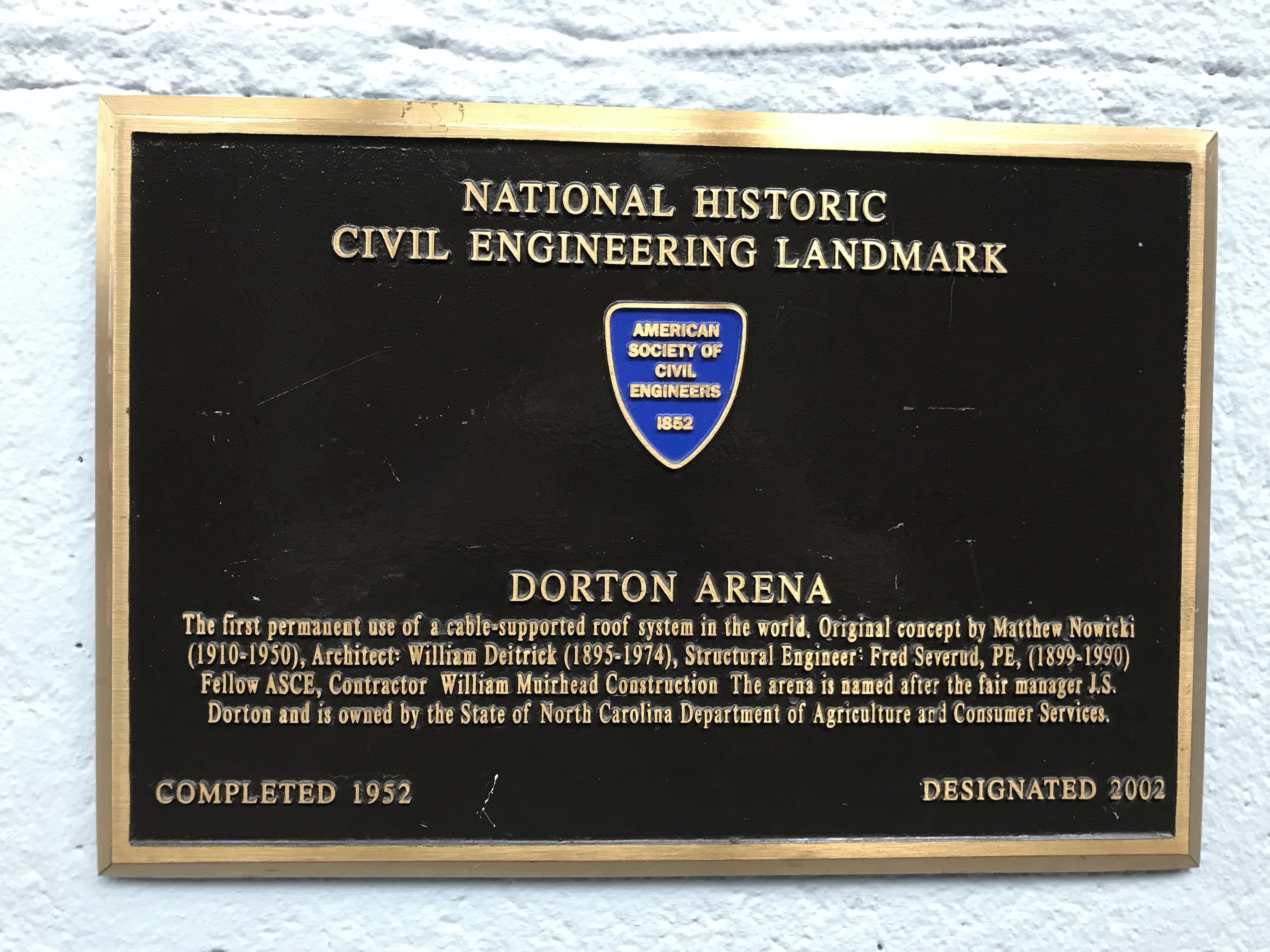Dorton Arena
35 47 38.4 N, 78 42 37.3 W
The Dorton Arena was the first permanent use of a cable-supported roof system in the world.
"For a long time the Raleigh Arena was the most important structure in the field of large-span cable-net structures. It was imitated in many similar designs, none comparable with the original in quality."
—Frei Otto, Tensile Structures, vol. 2, pp 56
The Dorton Arena was the first use of a cable-supported roof system in the world. Commissioned in 1949 by North Carolina State Fair manager J.S. Dorton, the new building was intended to be a livestock judging pavilion. Architect Matthew Nowicki (1910–1950) proposed a structure that included a pair of intersecting parabolic arches supported by slender columns around its perimeter with a network of wire cables that supported the saddle-shaped roof. When Nowicki was killed in a plane crash in Egypt in 1950, his mentor and friend, Raleigh architect William Henry Deitrick, took over the supervision of the detailed work of design and construction. The structural engineering firm Severud-Elstad-Krueger Consulting Engineers, headed by Fred Severud, served as structural engineering consultant to the project.
The Dorton Arena was the first indoor stadium designed entirely as a large column-free space. The final column-free area was 300 feet in diameter with 25,000 square feet of arena space. This design was possible due to the use of the revolutionary combination of compression rings and cables in tension to support the roof. The large superdomes which followed—such as the Houston Astrodome in 1965 and the Georgia Dome in 1992—can trace their beginnings back to the Dorton Arena.


